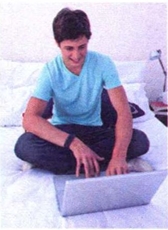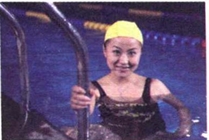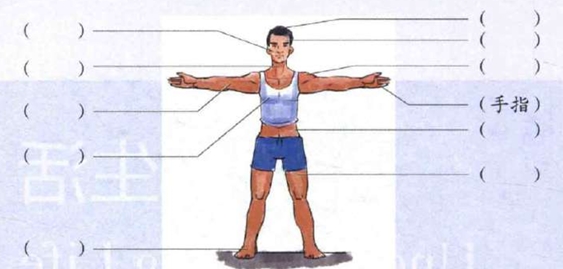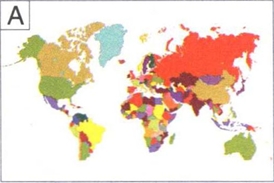③ 吃药以后可以喝茶吗?
④ 他今天都买了什么东西?为什么要买这么多?
⑤ 你知道男的正在找什么吗?
3 用本课新学的语言点和词语描述图片
Describe the pictures using the newly – learned language points and words.

Nǐ de bìng yǐjīng hǎo le, bié____le.
你的病已经好了,别____了。

Bié____le, míngtiān hái yào shàng xué ne.
别____了,明天还要上学呢。

____duì shēntǐ hěn hǎo.
____对身体很好。

____duì xuéxí Yīngyǔ yǒu bāngzhù.
____对学习英语有帮助。
语音 Pronunciation
特指问句的句调 Intonation of a Specific Question
疑问代词重读,重音之后全句句调逐渐下降。例如:
The interrogative pronoun is stressed, and the intonation of the part of the sentence following the stress falls gradually. For example:
Zhè shì shéi de bǐ?
(1)这 是 谁 的 笔?↘
Nǐmen xuéxiào yǒu duōshǎo xuéshēng?
(2)你们 学校 有 多少 学生?↘
Nǐ zài zhǎo shénme?
(3)你在 找 什么?↘
汉字 Characters
汉字偏旁 “走” 和 “穴” Chinese Radicals: “走” and “穴”
| 偏旁 Radical | 解释 Explanation | 例字 Example Characters |
|---|---|---|
| 走 | 走字旁,一般与奔跑和行走有关。 The radical “走” is usually related to the act of running or walking. |
超 chāo to exceed, to surpass 起 qǐ to get up, to rise |
| 穴 | 穴字头,一般与孔洞、房屋有关。 The radical “穴” is usually related to holes, caves or houses. |
空 kōng empty 穿 chuān to pierce through, to penetrate |
运用 Application
1 双人活动 Pair Work
两人一组,选择下列词语,用 “不要……了”“别……了” 练习说句子。
Work in pairs. Choose appropriate words and use “不要……了”“别……了” to make sentences.
例如:Búyào wánr diànnǎo le.
例如:不要 玩儿(to play) 电脑 了。
- kàn 看 kāfēi 咖啡
- chī 吃 shǒujī 手机
- wán 玩 xīn yīfu 新衣服
- mǎi 买 yào 药
- hē 喝 diànshì 电视
2 小组活动 Group Work
3~4人一组,用介词 “对” 练习说句子,每组请一位同学做记录。
Work in groups of 3 – 4. Practice saying sentences with the preposition “对”. Each group chooses a member to take notes.
| A | 对 | B | 很好/不好 | |
|---|---|---|---|---|
| 1 | 看电视 Kàn diànshì |
对 duì |
眼睛 yǎnjing |
不好。 bù hǎo. |
| 2 | ||||
| 3 | ||||
| 4 |









暂无评论内容